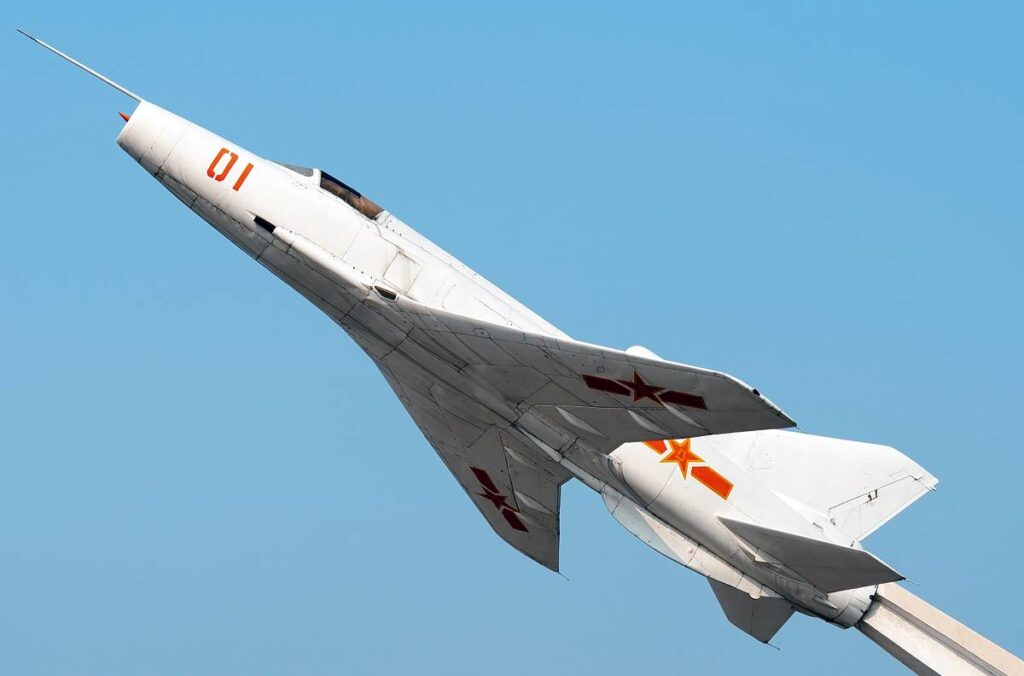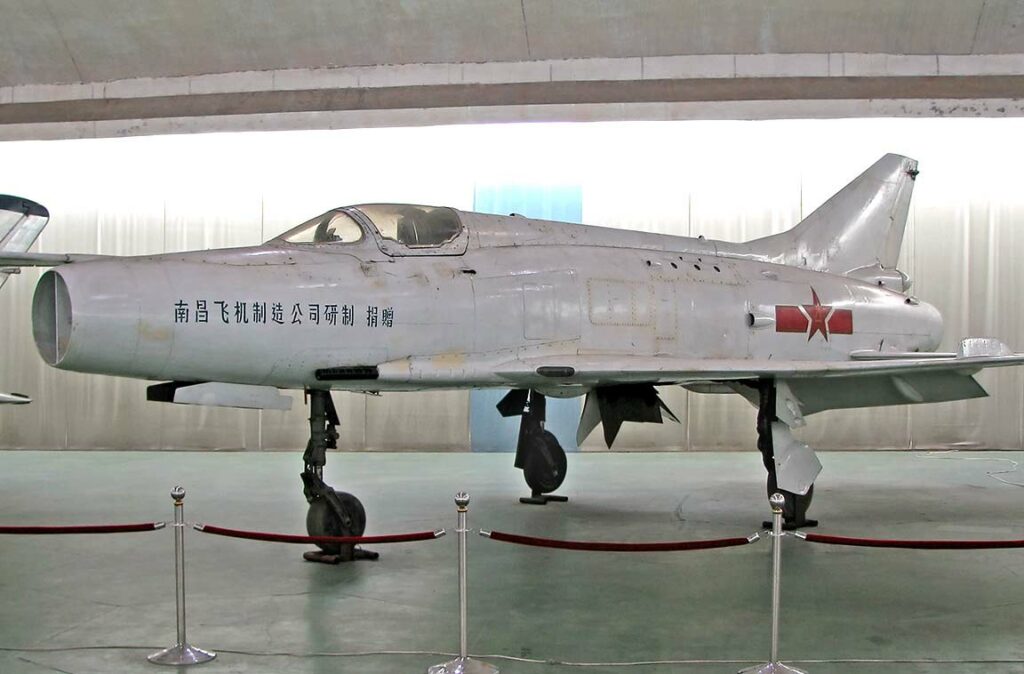Nanchang J-12: China’s lightweight, indigenous supersonic fighter prototype developed in the 1970s.
In brief
The Nanchang J-12, a lightweight supersonic fighter prototype, was developed by the Nanchang Aircraft Manufacturing Company (NAMC) and first flew in 1970. It featured a single WP-6Z turbojet engine, producing 9,000lb of thrust with afterburner, enabling speeds up to 808 mph. The design included low-set swept wings, a raised fuselage spine for limited rear visibility, and armament comprising a 30mm cannon and potential for air-to-air missiles across three hardpoints. Its development was halted in 1977 due to the superior performance of the Chengdu J-7.

History of the Development of the Nanchang J-12 (Jianjiji-12)
Initiated in 1969, the Nanchang J-12 development reflected the People’s Republic of China’s ambition to replace the older, Soviet-derived MiG-19s and create a domestically produced supersonic fighter. The Chinese Air Force sought an economical yet effective jet capable of short-field operations, leading to the design and production of the J-12 by NAMC. The project’s first prototype took flight on December 26, 1970, under the lead of designer Lu Xiaopeng. Despite its innovative approach, the aircraft was ultimately outperformed by the Chengdu J-7, a derivative of the Soviet MiG-21, leading to the project’s cessation in 1977 after only nine units were built.
Design of the Nanchang J-12 (Jianjiji-12)
The J-12 was streamlined with a focus on minimalism and agility. It featured a length of approximately 34 feet, a wingspan of 24 feet, and an empty weight of about 6,993 pounds. The aircraft’s design incorporated a nose-mounted circular intake, reminiscent of the MiG-21, but with true swept wings rather than a delta wing configuration. These design choices were aimed at enhancing the fighter’s aerodynamic efficiency and combat maneuverability. However, visibility issues due to the raised fuselage spine and other design limitations affected its operational effectiveness, prompting several redesigns that ultimately could not secure its future in the Chinese military.
Performance of the Nanchang J-12 (Jianjiji-12)
The J-12’s performance was marked by a maximum speed of 808 mph and a service ceiling of 55,700 feet, competitive with contemporaries but still lacking in several aspects. The fighter’s range was limited to 428 miles, and while it showcased a rapid climb rate of over 35,000 feet per minute, these figures were not enough to surpass the capabilities of the then-emerging Chengdu J-7. The J-12’s operational challenges, combined with its relatively modest thrust and payload capacity, led to its eventual phase-out.
Variants of the Nanchang J-12 (Jianjiji-12)
The J-12 project yielded three prototypes and six pre-series aircraft. Although these variants were primarily experimental, each iteration incorporated slight modifications aimed at addressing the deficiencies observed during testing phases, such as adjustments in armament placement and airframe lightening efforts.

Military Use and Combat of the Nanchang J-12 (Jianjiji-12)
The J-12 did not see combat or extensive military use, as its development was discontinued in favor of more capable designs. It served primarily in a testing and evaluation role within the Chinese Air Force. The insights gained from the J-12 program informed subsequent Chinese military aircraft developments, contributing to the evolution of China’s fighter aircraft capabilities, despite the J-12’s limited production run and operational history.
–
The Nanchang J-12 remains a significant chapter in the history of Chinese aviation, emblematic of the era’s challenges and the evolving capabilities of China’s aerospace industry. Although it did not achieve operational success, the lessons learned from its development have undoubtedly influenced subsequent generations of Chinese fighter aircraft.
Back to the Fighter Jet section.